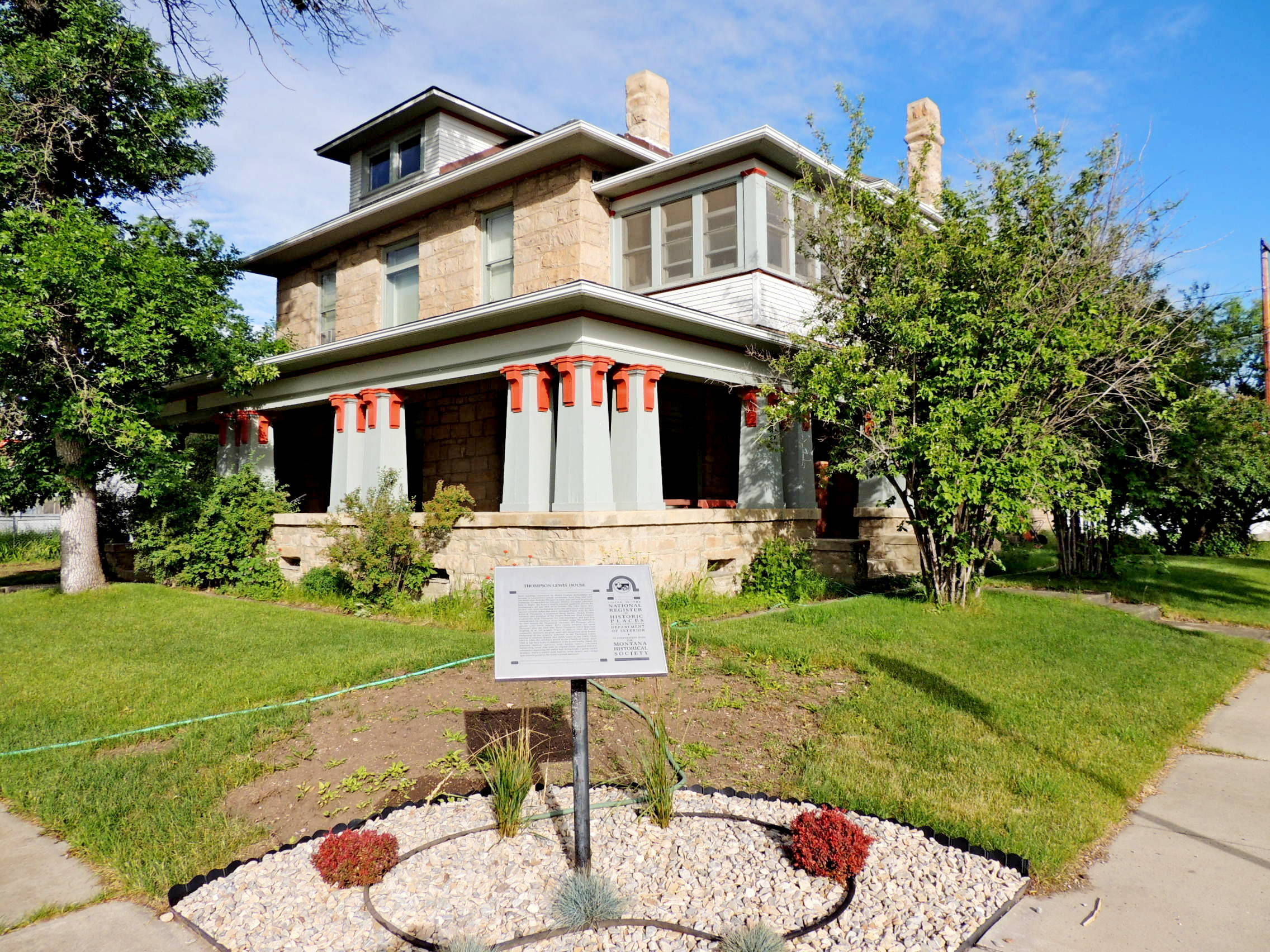|
 Bright-Thompson-Lewis House - Lewistown, MT Posted by:  T0SHEA T0SHEA
N 47° 03.854 W 109° 25.967
12T E 619005 N 5213494
First the Bright House, then later the Thompson House, still later this became the Lewis House.
Waymark Code: WM10J75
Location: Montana, United States
Date Posted: 05/13/2019
Views: 1
One of the several Lewistown residences built by Croatian stonemasons around the turn of the twentieth century, this home was built by contractor Peter Tuss in 1902 for the Citizens’ Electric Company president, John L. Bright. At the same time, a gambrel roofed carriage house, which has come to be known as the Bright House, was build across Boulevard Street by Mr. Bright.
From Bright, the home passed to sheep rancher Rufus B. Thompson in 1905, to be used by himself and his family as an "in town" home. When Thompson passed away in 1914, the home remained in the family, eventually going to Ronald and Helen Lewis, relatives of the Thompsons, in the 1940s. It remains in the Lewis family today. As an aside, the building served as a church from 1943 to 1948, serving the Church of Christ.
THOMPSON-LEWIS HOUSE
Stone buildings constructed by skilled Croatian stonemasons are intrinsic to Lewistown’s unique personality. Peter Tuss, who built this home with Anthony Weingart in 1902, was one such prominent craftsman. Constructed for Citizens’ Electric Company president John L. Bright, the home’s roughly coursed sandstone reveals the stonemason’s art and skill of its builder. The cubic form, low-pitched roof, wide overhanging eaves, and open porch with massive tapered columns define the newly emerging Prairie style. In 1905, Rufus B. Thompson, a prominent sheep rancher, Fergus County legislator, and president of the Empire Bank and Trust Company, acquired the deed. Thompson, his wife Immergene, and their five children used the residence as an “in-town” home. The addition at the back housed the Thompsons’ caretaker, Bill Freeman, whose parents were freed slaves. Bill’s family adopted the name “Freeman” after the Civil War. Rufus Thompson was a large man weighing in at 325 pounds. When he died in 1914, the entire community mourned his great heart and exceptional good humor. Ownership of the property remained in the Thompson family, passing to relatives Ronald and Helen Lewis in the 1940s. From 1943 to 1948, the residence served as the Church of Christ. Since 1948, it has been home to members of the Lewis family. Today, the gracious interior survives with details intact. Lincrusta wainscoting, wood trim with its original finish, paneled staircase, colonnades separating the parlor and dining room, a green marble fireplace, butler’s pantry with built-in china closets, and vintage light fixtures preserve the home’s period ambience.
From the NRHP plaque at the building
Bright-Thompson-Lewis House
The central mass of this two-story Prairie style residence is a cube in form, with the exception of a re-entrant corner at the right front corner. The walls are of uncoursed cut stone construction with raised mortar joints to give the appearance of random ashlar. A nearly full-width, one-story stone projection extends from the back of the house that is long enough to accommodate individual rooms. It is connected to a wood frame, one-story, gable-roofed garage that is located along the alley. The building originally provided living quarters for a servant. The garage contributes to the property's historical significance. A veranda extends across the front or entry elevation of the house and returns along the northeast elevation of the central mass until it intersects the re-entrant corner noted above. The porch cap is composed of poured concrete. The re-entrant corner is built in above the veranda with wood frame construction to house and enclose a sunroom or balcony space. The roof is essentially pyramidal, covered with composition shingles, and has a hipped dormer centered on the front of the house. The veranda and one-story extension are also hip-roofed; all fascias are narrow and plumb, and all soffits are boxed with bead pattern boards.
The house was constructed for Citizens' Electric Company president John L. Bright in I 902. In I 905, Rufus 8. Thompson, a prominent sheep rancher, Fergus County legislator, and president of the Empire Bank and Trust Company, acquired the deed. Thompson, his wife lmmergene, and their five children used the residence as an " in-town" home. An addition at the back housed the Thompsons' caretaker, Bill Freeman, the son of freed slaves, whose family adopted the name "Freeman" after the Civil War. Thompson's passing in 1914 was mourned by the entire community; ownership of the property, however, remained in the Thompson family, passing to relatives Ronald and Helen Lewis in the 1940s. From 1943 to 1948, the residence served as the Church of Christ. Since 1948, it has been home to members of the Lewis family. This addendum to the Lewis House nomination changes the name of the property from "Lewis House" to the "Bright-Thompson-Lewis House" to fully reflect the historic associations of the property.
From the NRHP Registration Form 
Describe the area and history:
Se above

|
Visit Instructions:
Please describe your visit- The good, the bad & the ugly. :)
Recent Visits/Logs:
| There are no logs for this waymark yet. |
|
|
|
|